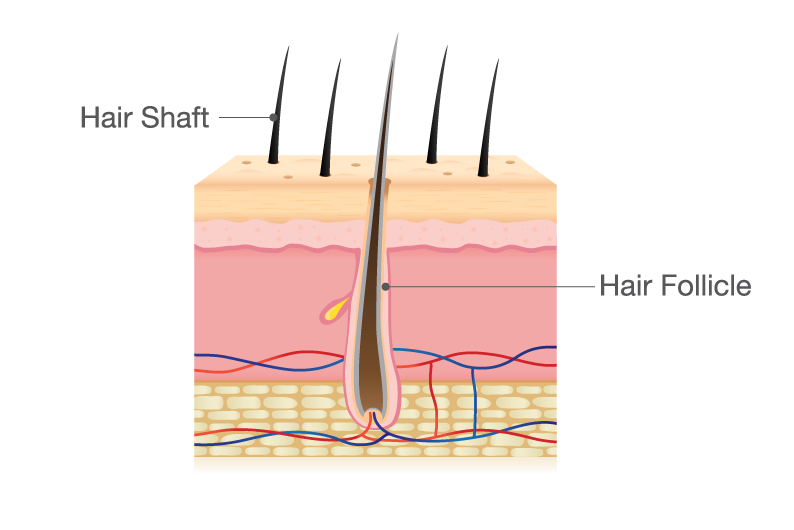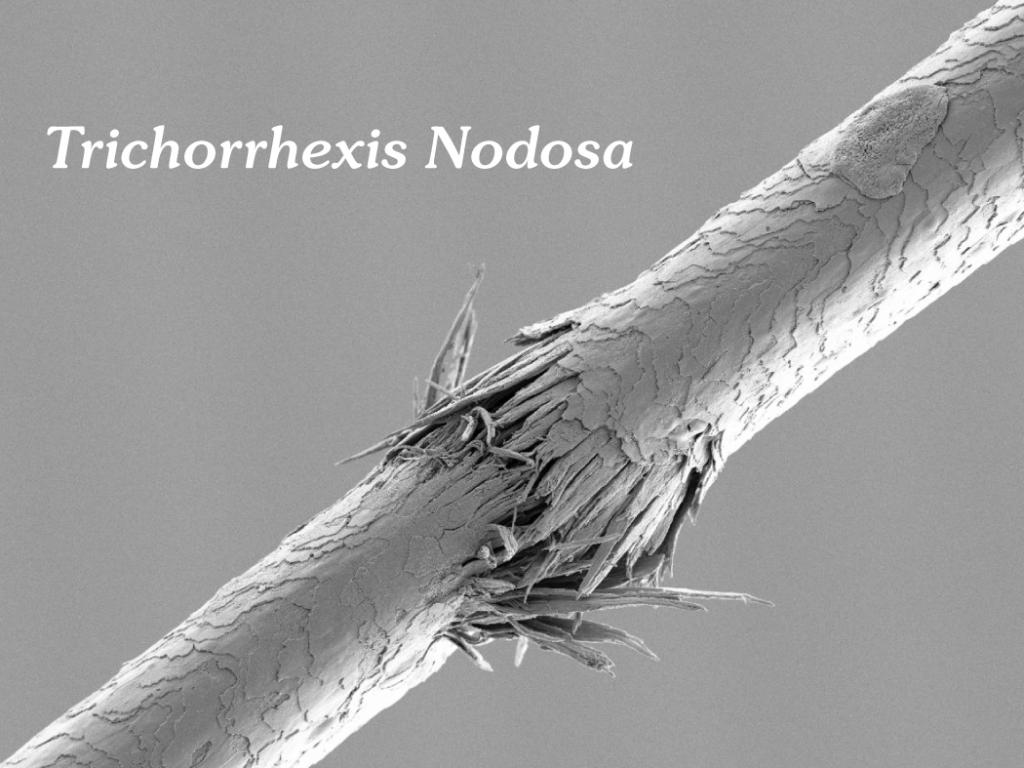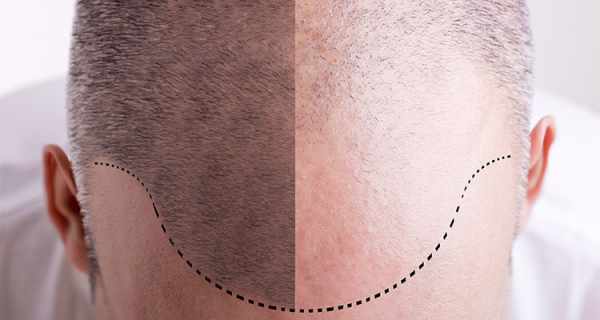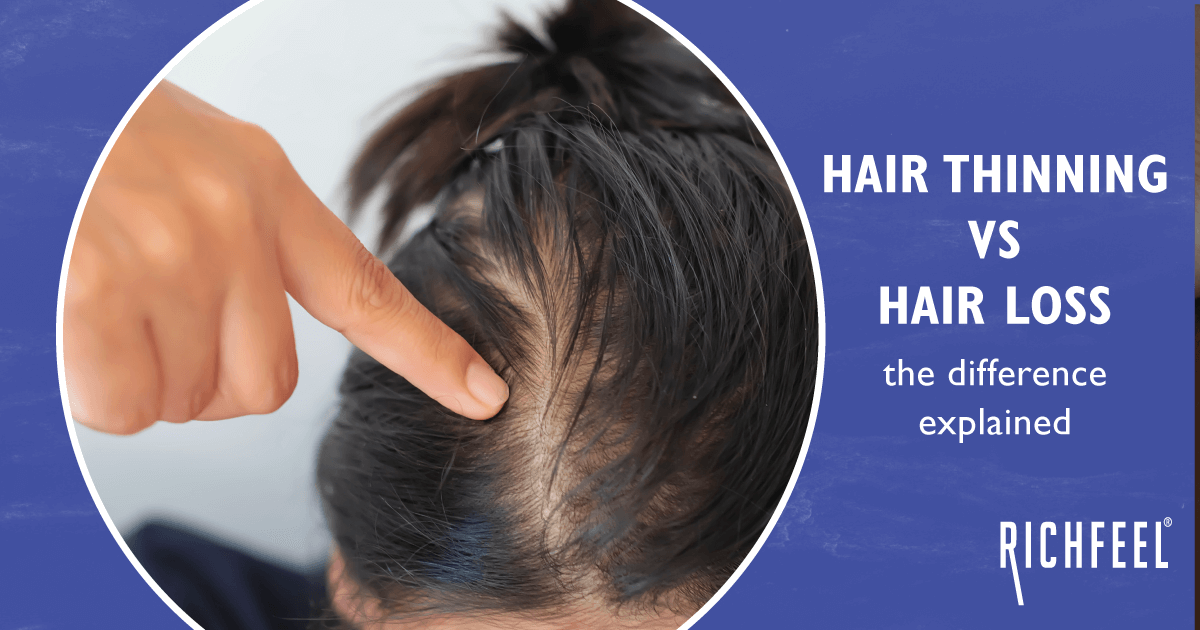Hair fracture? How can you possibly fracture your hair?!
Sounds crazy? It may sound fairly off, but yes…your hair can indeed get fractured!
We are referring to hair shaft defects. Hair shaft defects or hair shaft disorders, are quite common and are indicative of underlying pathology. This is something that you cannot self-diagnose at home. It is a condition that needs professional diagnosis and tricho-care accordingly.
As we always say, when you know the root problem, you can treat it appropriately and control it in the long term. And with conditions such as this, professional expertise and intervention are much needed.
Today, we will break this topic down in simple terms and help you understand what these hair defects are, what Trichorrhexis Nodosa is and how it is to be treated.
What is Hair Shaft?
Hair is an appendage of a layer of skin called the epidermis (the outer layer). It consists of two distinct parts namely the hair follicle and the hair shaft.

Hair follicle is the basic unit for the generation of hair. The Hair shaft, simply put, is the hair strand that is visible to you above your scalp. It consists of a cortex, cuticle cells, and a medulla. It is made of a protein called keratin that is compacted and fused together. The keratin protein consists of amino acids that are connected together by a polypeptide chain known as the alpha helix (bound together by chemical bonds).
Do read our blog on hair anatomy to understand the hair structure and composition.
What are Hair Shaft Defects?
Hair shaft disorders or defects are quite a diverse group of abnormalities of the hair shaft that could be congenital or acquired. While some of these disorders cause hair shaft fragility, leading to increased hair breakage; others may alter the appearance or texture of your hair, though it may not be as fragile.
When examined clinically, structural changes in the hair shaft can be a part of a bouquet of symptoms. Changes in hair shaft over a large area of scalp can cause conditions like alopecia, frizzy woolly hair or at times may go completely undetected unless examined microscopically. As mentioned above, it is not something that you can diagnose and treat yourself!
Some of the known hair shaft disorders, in brief, are as under:
- Trichorrhexis Nodosa (TN)Trichorrhexis nodosa is a commonly occurring abnormality of the hair shaft. It is characterised by the presence of nodules in the hair strand that cause hair breakage and alopecia.
- TrichoclasisTrichoclasis (“greenstick” fracture of the hair shaft) is a transverse fracture, splinted, by an intact cuticle. In this condition, no constant abnormality of the cuticle or cortex is observed.
- TrichoptilosisThis refers to the is the longitudinal splitting of the hair shaft or split ends. Rigorous brushing or physical and chemical trauma can result in Trichoptilosis. The cuticular loss from weathering causes the condition. The cortical fibres separate like the frayed ends of a rope giving rise to “split ends” or “frizzies”. Trichoptilosis is a fairly common fracture arising from trauma.
- PseudomonilethrixWith this condition, irregular beading or nodes is observed along the hair shaft. The beaded-appearance is caused by the expansion of the normal hair shaft, due to indentation and/or flattening. Pseudomonilethrix can lead to fragility and breakage of hair resulting in partial baldness.
- Trichonodosis‘Knotting of hair’ is the common term for this condition, as is the symptom. Seen more often in curly hair, this condition can either be genetic or acquired due to trauma. It does not bear any clinical significance.
- TrichoschisisThis refers to a clean transverse break across the hair shaft. It is known to arise due to the absence of the cuticle in the affected area. It is usually seen in congenitally brittle hair, with low-sulfur content.
- Trichorrhexis Invaginata (Bamboo Hair)Bamboo Hair, as it is commonly known, is a distinctive hair shaft abnormality that may occur sporadically, either in normal hair, or with other hair shaft abnormalities, or regularly as a marker for Netherton’s syndrome.
- Oblique Fractures – Tapered FractureThis condition causes a pencil-point appearance. This is due to the inhibition of nucleic acid and protein synthesis leading to mitosis (cell-division – simple duplication of a cell and all of its parts) during the anagen phase.
- TrichomalaciaTrichomalacia is the hair shaft damage that occurs on the underlying anagen hair, from repeated hair plucking or pulling. It is most commonly seen in those suffering from trichotillomania.
- Green HairThis condition is always associated with copper in the hair in some form and tends to affect bleached hair. It may be a result of over-exposure to swimming pool water, where chloride treatment or copper algaecides are used. It may also stem from high levels of copper in domestic water pipes.
- Bubble HairThis is when the cross-section of the hair shaft shows rows of bubbles within it. It is associated with highlighting hair and frequent use of hair blow dryers. It is said to be caused by the focussed heating of damp hair. This can produce bubbles within the hair shaft, resulting in the hair fibres becoming dry and brittle.
Today we will discuss one of the above-mentioned hair shaft disorder that is most often encountered in clinical practice – Trichorrhexis Nodosa.
What is Trichorrhexis Nodosa (TN)?
Also known as Hair Shaft Fracture, if you look up the net, Wiki defines TN as, a defect in the hair shaft that is characterised by the thickening or weak points (nodes) that cause hair to break off easily.

The condition basically leads to hair being & looking damaged, lack of hair growth and eventually, hair loss. It can be inherited/ congenital or acquired. Of the two, the acquired kind is more common. It is most often observed due to weathering from physical, mechanical or chemical causes. It tends to be distal (away from the root), where the weathering is most.
TN is characterised by the formation and presence of nodules along the hair shaft, which leads to hair that is very prone to breakage. When the condition spreads over a large area, it leads to alopecia.
When examined under the microscope, TN features little cracks on the hair shaft, from which several fibres emerge that resemble two brushes pushed against each other in the opposite direction. The nodules are whitish-yellow in colour and are randomly distributed along the hair shaft. They make the hair frail and prone to break easily.
As mentioned, this defect can also be hereditary (though it is mostly acquired) and the condition manifests within the first year of the affected infants being born. It is inherited in an autosomal dominant fashion.
What causes Trichorrhexis Nodosa (TN)?
TN is mainly caused by certain underlying disorders, even some rare ones, such as (not exhaustive),
- Hypothyroidism
- Argininosuccinic Aciduria – Build-up of ammonia in the body
- Netherton’s syndrome
- Menkes syndrome also known as the Menkes kinky hair syndrome
- Certain abnormal conditions such as abnormal development of the skin, hair, nails, teeth, or sweat glands (ectodermal dysplasia)
- Trichothiodystrophy – an inherited disorder that leads to brittle hair, skin problems, and even intellectual disability in some
- Malnutrition or endocrinopathy, especially iron deficiency
- Biotin deficiency – here referring to an inherited disorder, wherein the body is unable to use biotin productively.
The other but most common cause is the acquired type, where a certain physical and chemical stress to the hair causes Trichorrhexis nodosa.
Some of the physical factors responsible for the damage to the hair shaft are,
- Excessive combing of hair
- Hair straightening and perming
- Blow-drying
- Frequent excessive brushing
- Aggressive scalp massage
- Backcombing constantly
- Stressed hairstyles where the hair is pulled very tight, straining the shafts,
- Excessive application of heat for styling – use of high temperatures
- Lengthy/ repeated ultraviolet exposure
- Head rolling and banging
- Habit tics like trichotillomania
- Scratching and pulling associated with pruritic dermatoses, such as seborrheic dermatitis and pediculosis capitis
Also, chemical trauma like,
- Excessive exposure to saltwater or chlorinated water
- Excessive use of shampoo
- Bleaching
- Frequent application of hair-permanent liquid, hair dyes
- Frequent use of hair sprays
- Use of chemical hair straighteners
- Use of selenium shampoo
… and such others which your trichologist can detail you about.
Trichorrhexis nodosa is ultimately a response to physical or chemical trauma. In most cases, it is this cause – a reflection of the amount of trauma inflicted on the hair shafts. It is in very rare cases that this is observed as an inherent or structural defect.
What are the common symptoms?
The most common tell-tale symptoms are small whitish-yellow nodules, at irregular intervals, visible along the length of the shaft. The number of nodules and intervals may vary depending on the length of the hair. Each nodule represents the area of cuticular cell disruption, which leads to the underlying cortical fibres to fray and separate. This will be visible only under the microscope!
However, there are some symptoms which you can spot. And when you do, you should seek immediate professional intervention.
- Patchy hair
- Dull and very brittle hair
- Hair breaks very easily
- Lack of hair growth
- Ends of the hair shaft are very thin and split
- Whitish discolouration of the tips
How does a Trichologist help?
When you visit a Trichologist, a detailed diagnosis is done. The diagnosis of TN is done with the help of a microscopic examination. A hair strand is taken and investigated under a microscope for the characteristic whitish nodules. Sometimes, a skin biopsy is also done to check for genetic mutations.
In recent times the advanced diagnostic approach employing Trichoscopy is being used to test for TN. Trichoscopy employs a video-dermascope which then examines the hair as well as the scalp. The preliminary feature of two brushes pushed against each other in the opposite direction can be observed by this method. This is a non-invasive method and does not involve any plucking or cutting of hair strands. It is a very reliable and easy method to diagnose TN and other types of hair shaft defects.
This apart, during the consultation, the medical history is discussed in detail, along with a talk on lifestyle and any possibly stressful events in the recent past. The doctor also checks the hair and scalp physically. Hair strands are taken as a sample to understand the A/T ratio of the hair growth cycle. Some of the common tests include the Hair pull test, Hair pluck test and the Wash test. The methods of diagnosis are applied on a need basis, further, to classify if the disorder is genetic or acquired. Acquired disorders can be treated and a permanent cure can be given. For genetic problems, appropriate hair care is suggested.
When genetic anomaly of hair is observed, a thorough study is done. You are also checked for any other congenital anomalies or syndromes, ruling out through a clear process. Where a need is, you are also guided to see the concerned medical expert.
How do you treat TN?
As mentioned above, a consultation with a trichologist throws light on the root trigger point. The diagnosis is confirmed after a thorough review of the patient history, physical examination, and microscopic study of hair shafts.
Establishing the root cause helps address the condition right. By adopting the right treatment the hair cycle can be normalized and hair will begin to get healthier. Treatment also involves educating the patient about appropriate hair care(since predominantly TN is a result of physical or chemical trauma), prescribing hydrating therapies, deep conditioning, external & internal supplements for the synthesis of healthy hair. Underlying metabolic disorders, if any, are treated accordingly, usually through the prescription of a specifically customised diet.
Trichorrhexis Nodosa resolves on its own when the identified causative factors are avoided. With gentle appropriate care, the hair can be restored back to its normal health. Proper hydration and conditioning are key.
How to prevent hair shaft defects?
Many of the hair shaft disorders are not completely curable. But some definitely improve over time with a right, timely treatment of the underlying cause. In general, it is advisable to keep a check on physical or chemical trauma to the hair, to reduce additional hair breakage & loss.
As regards the prevention of hair shaft disorders, as you can see, many of the causes are improper routine hair-habits and trauma that is fairly avoidable.
So how do you prevent it?
Simply put, avoid physical and chemical trauma to the hair shaft.
What would also help is to generally attempt to follow healthy hair habits. Avoid common hair care mistakes. This would include having a regular proper hair care regime and ensuring a healthy diet.
To list out some doable preventive measures,
- Avoiding frequent use of styling equipment – Do not iron hair
- Avoiding chemical treatments
- Avoid aggressive brushing and grooming
- Avoid products with strong chemicals – hair straightening compounds, permanents, etc.
- Keep a check on hair-damaging habits.
- Eat a healthy and balanced diet – with due inputs from your Trichologist
- Drink ample water
- Following a regular hair care regimen of oiling, shampooing, washing, and conditioning
- User hair products approved by your trichologist for your hair condition. Do not use off-the-rack products.
- If your hair is prone to dryness, deep condition periodically
- If you colour frequently, get a detox tricho treatment done regularly.
- A visit to your Trichologist every 4-6 months.
Consult a professional trichologist in fixed intervals. This will help you spot any irregular signs and intervene appropriately when needed. Reversible hair problems and hair loss can become irreversible when not addressed in a timely manner.
The Trichologist will guide you through the right diet and lifestyle that is best for you, suitable treatments, ensuring that you avoid concerns of hair loss. Trichologists perform a thorough study of your medical history, conduct a physical examination of your hair & scalp, diagnose through hair analysis using various methods and tech such as the FCT, capilloscopy, trichogram, hair pull test, etc. , further examine the hair shaft, growth window, and many more such key metrics. Periodic check-ups help keep a tab on your hair’s health and well being.
A reminder as always – for all things ‘Hair’, do follow our blogs on hair loss, hair care, treatments and solutions, and such other interesting hair trivia!
Connect with us on social media on the links below. Do leave your questions & comments and we will address them all.



